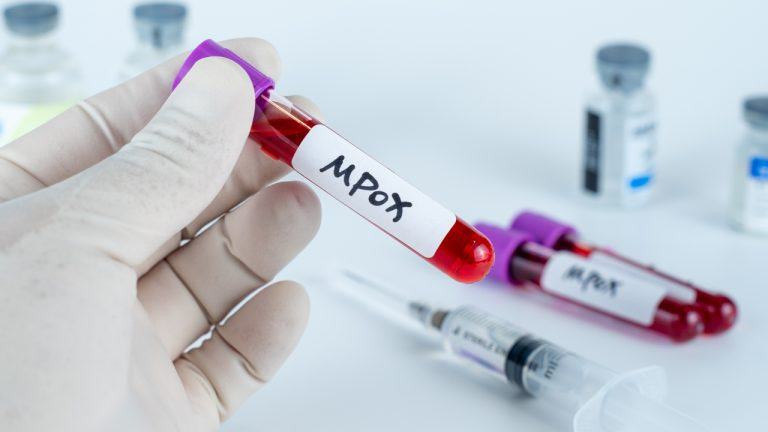 Recently, Dr. Tedros Adhanom Ghebreyesus, the Director-General of the World Health Organization (WHO), officially declared that the Mpox outbreak, commonly known as monkeypox, is now a public health emergency of international concern. Following this announcement, Polymarket users have started placing bets on whether Mpox will be categorized as a pandemic in 2024. Polymarket Bettors Give […]
Recently, Dr. Tedros Adhanom Ghebreyesus, the Director-General of the World Health Organization (WHO), officially declared that the Mpox outbreak, commonly known as monkeypox, is now a public health emergency of international concern. Following this announcement, Polymarket users have started placing bets on whether Mpox will be categorized as a pandemic in 2024. Polymarket Bettors Give […] The chief investment officer at asset management firm Bitwise has addressed the current market downturn, drawing parallels with the market crash on March 12, 2020, when the Covid-19 pandemic caused global panic. “People smash the sell button for liquid assets during broad-based panics. But from my seat, today’s events play into the long-term story for […]
The chief investment officer at asset management firm Bitwise has addressed the current market downturn, drawing parallels with the market crash on March 12, 2020, when the Covid-19 pandemic caused global panic. “People smash the sell button for liquid assets during broad-based panics. But from my seat, today’s events play into the long-term story for […]
“Even Mars may not be safe” if superintelligent AI turns against humanity, warns Ethereum co-founder Vitalik Buterin.
Super-advanced artificial intelligence, left unchecked, has a “serious chance” of surpassing humans to become the next “apex species” of the planet, according Ethereum co-founder Vitalik Buterin.
But that will boil down to how humans potentially intervene with AI developments, he said.
New monster post: my own current perspective on the recent debates around techno-optimism, AI risks, and ways to avoid extreme centralization in the 21st century.https://t.co/6lN2fLBUUL pic.twitter.com/h5aIyFNCoh
— vitalik.eth (@VitalikButerin) November 27, 2023
In a Nov. 27 blog post, Buterin, seen by some as a thought leader in the cryptocurrency space, argued AI is “fundamentally different” from other recent inventions — such as social media, contraception, airplanes, guns, the wheel, and the printing press — as AI can create a new type of “mind” that can turn against human interests, adding:
“AI is [...] a new type of mind that is rapidly gaining in intelligence, and it stands a serious chance of overtaking humans' mental faculties and becoming the new apex species on the planet.”
Buterin argued that unlike climate change, a man-made pandemic, or nuclear war, superintelligent AI could potentially end humanity and leave no survivors, particularly if it ends up viewing humans as a threat to its own survival.
“One way in which AI gone wrong could make the world worse is (almost) the worst possible way: it could literally cause human extinction.”
“Even Mars may not be safe,” Buterin added.
Buterin cited an August 2022 survey from over 4,270 machine learning researchers who estimated a 5-10% chance that AI kills humanity.
However, while Buterin stressed that claims of this nature are “extreme,” there are also ways for humans to prevail.
Buterin suggested integrating brain-computer interfaces (BCI) to offer humans more control over powerful forms of AI-based computation and cognition.
A BCI is a communication pathway between the brain's electrical activity and an external device, such as a computer or robotic limb.
This would reduce the two-way communication loop between man and machine from seconds to milliseconds, and more importantly, ensure humans retain some degree of “meaningful agency” over the world, Buterin said.

Related: How AI is changing crypto: Hype vs. reality
Buterin suggested this route would be “safer” as humans could be involved in each decision made by the AI machine.
“We [can] reduce the incentive to offload high-level planning responsibility to the AI itself, and thereby reduce the chance that the AI does something totally unaligned with humanity's values on its own.”
The Ethereum co-founder also suggested “active human intention” to take AI in a direction that benefits humanity, as maximizing profit doesn’t always lead human down the most desirable pathway.
Human beings are deeply good. pic.twitter.com/AbOfd75IJ4
— vitalik.eth (@VitalikButerin) November 27, 2023
Buterin concluded that “we, humans, are the brightest star” in the universe, as we’ve developed technology to expand upon human potential for thousands of years, and hopefully many more to come:
“Two billion years from now, if the Earth or any part of the universe still bears the beauty of Earthly life, it will be human artifices like space travel and geoengineering that will have made it happen.”
Magazine: Real AI use cases in crypto, No. 1: The best money for AI is crypto

Gold bars recently sold out at Costco, reflecting investors’ souring mood about the economy. Is there a silver lining for Bitcoin?
Costco has made headlines this week after it rapidly sold out of gold bars. In times of economic uncertainty and rising inflation, it's no surprise that investors are turning to traditional safe-haven assets like gold. The question is whether gold’s performance will eventually catapult its price above $2,050, a level last seen in early May.
In the past 12 months, the price of gold has surged by an impressive 12%. This rally has been partially fueled by the Federal Reserve's efforts to combat inflation by maintaining higher interest rates, a move that benefits scarce assets like gold. While gold's performance is commendable, it's essential to put it into perspective.

Over the same period, gold's returns have roughly matched those of the S&P 500, which saw a gain of 15.4%, and WTI oil, which increased by 12%. However, these gains pale in comparison to Bitcoin's staggering 39.5% rise. Still, it's important to note that gold's lower volatility at 12% makes it an attractive choice for investors looking to manage risk.
One of gold's strongest selling points is its reliability as a store of value during times of crisis and uncertainty. Gold's status as the world's largest tradable asset, valued at over $12 trillion, positions it as the primary candidate to benefit from capital inflows whenever investors exit traditional markets like stocks and real estate.

For example, at the height of the COVID-19 pandemic. In the 30 days leading up to March 24, 2020, gold only dipped by 2.2%.
According to data from Gold.org, central banks have been net buyers of gold for the second consecutive month, adding 55 tons to their reserves, with notable purchases by China, Poland and Turkey.
Bloomberg reported that Russia is planning to bolster its gold reserves by an additional $433 million to shield its economy from the volatility of commodity markets, especially in the oil and gas industries.

Taking a closer look at production figures, Visual Capitalist estimates that approximately 3,100 tonnes of gold were produced in 2022, with Russia and China accounting for 650 tonnes of this total. The World Gold Council also predicted that if gold prices continue to rise, total production could reach a record high of 3,300 tonnes in 2023.
One crucial metric to consider when evaluating gold's investment potential is its stock-to-flow ratio, which measures the production of a commodity relative to the total quantity in existence.
Related: Bitcoin price holds steady as S&P 500 plunges to 110-day low
Gold's stock-to-flow has remained stable at around 67 for the past 12 years. In contrast, Bitcoin has experienced three scheduled halvings, effectively reducing its issuance, and currently boasts a stock-to-flow ratio of 59. This suggests that Bitcoin has a lower equivalent inflation rate compared to the precious metal.
Bitcoin’s performance could surpass gold’s as the U.S. government approaches a shutdown due to reaching the debt limit, causing investors to seek alternative scarce assets. Bitcoin’s $500 billion market capitalization makes it easier for the price to jump even if its inflow is much smaller. Additionally, central banks could be compelled to sell their gold holdings to cover expenses, further boosting Bitcoin's appeal.
There's also the possibility of new gold discoveries. While gold remains a stalwart in the world of safe-haven assets, Bitcoin's impressive gains and lower equivalent inflation rate make it a strong contender for investors seeking alternative stores of value. Despite this, the ongoing economic uncertainty and the Federal Reserve's monetary policies will continue to benefit both assets.
This article is for general information purposes and is not intended to be and should not be taken as legal or investment advice. The views, thoughts, and opinions expressed here are the author’s alone and do not necessarily reflect or represent the views and opinions of Cointelegraph.

Research into “Long COVID” and furthering medical infrastructure development will be the two main focus areas for Buterin.
Ethereum co-founder Vitalik Buterin is working with India-based crypto fund Crypto Relief and Polygon co founder Sandeep Nailwal to send $100 million towards COVID-19 research and medical infrastructure development in India.
Buterin and Nailwal will receive $90 million in USD Coin (USDC) from Crypto Relief, while Buterin will provide $10 million out of his own pocket to further the cause. The two will then help distribute the funds.
According to a January 2022 Twitter post from Nailwal, Crypto Relief will transfer the funds to Buterin in order for the India-based crypto fund to remain in full compliance with their local laws.
The first installment went towards tackling the COVID-19 pandemic in India through “emergency humanitarian relief.”
Crypto Relief describes itself as a community-run fund which has delivered financial relief to India during the COVID-19 pandemic.
Buterin explained in a June 8 Twitter post that COVID-19 and “future pandemics” will continue to be a “large risk in the 21st century.” According to Buterin, we need a “global solution” that combines “frontier scientific innovation” and “on-the-ground implementation.”
Last year @CryptoRelief_ led by @sandeepnailwal allocated $100m to Covid research projects I wanted to fund
— vitalik.eth (@VitalikButerin) June 8, 2023
Sandeep and I discussed and jointly concluded these and other projects are high-impact and need follow through grants. Hence we decided to put $100m more to these projects
Buterin said much of the COVID-19 research will focus on COVID-19 airborne transmission by building better medical equipment.
“This includes improving ventilation, HEPA filtering, and experimental tech like UVC irradiation,” he said.
The other main research area will focus on “Long COVID,” Buterin added.
“The most salient risks from Covid today are the very high number of people experiencing very-long-term symptoms (aka #LongCovid), and so Long Covid research continues to be a primary focus.”
We look forward to ongoing collaboration between our teams and our networks. Covid won't end on its own, and there continues to be ongoing risk that the pandemic/hyperendemic will return to a more acute state:https://t.co/vxyd5n27rt
— vitalik.eth (@VitalikButerin) June 8, 2023
Additionally, Buterin explained that the $100 million will be disbursed to a Gnosis Safe wallet using the following contract address.
Related: The virus killer: How blockchain contributes to the fight against COVID-19
The first $100 million donation was deployed by Buterin in late January 2022 or soon after, which initially came in the form of Shiba Inu (SHIB).
CryptoRelief sending $100m of the $SHIBA funds back to me. I plan to personally deploy these funds with the help of science advisors to complement CryptoRelief's existing excellent work with some higher-risk higher-reward covid science and relief projects worldwide. https://t.co/xvHxzwwdn8
— vitalik.eth (@VitalikButerin) January 28, 2022
It isn’t the first philanthropic effort of Buterin’s either.
In April 2022, Buterin sent $5 million worth of Ether (ETH) donations to “Aid for Ukraine” to assist its defence against Russia’s invasion in February 2022.
As of November 26, Crypto Relief has managed to raise $473 million in funds, according to the firm’s website.
Cointelegraph reached out to Crypto Relief to get a more up-to-date figure but did not receive an immediate response.
Magazine: Joe Lubin — The truth about ETH founders split and ‘Crypto Google’
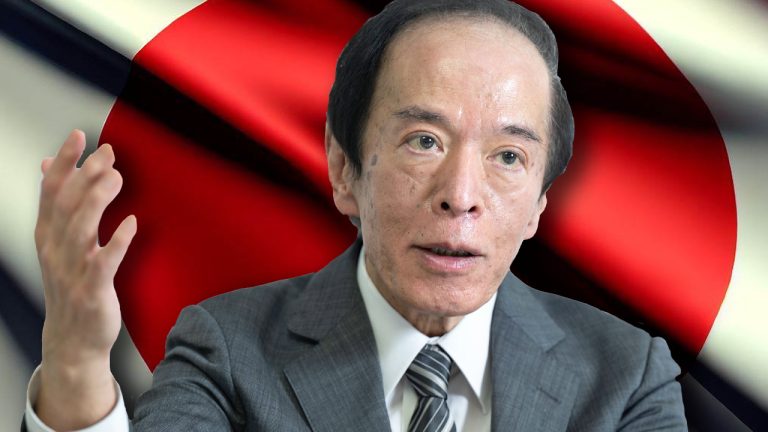 This week, the Statistics Bureau of Japan unveiled the latest core consumer price index (CPI) report for the country, revealing a surge to 3.5%. This figure comes as a surprise to analysts who had predicted a more modest 2.9% for the end of the quarter. It’s worth noting that Japan’s inflation has been steadily rising […]
This week, the Statistics Bureau of Japan unveiled the latest core consumer price index (CPI) report for the country, revealing a surge to 3.5%. This figure comes as a surprise to analysts who had predicted a more modest 2.9% for the end of the quarter. It’s worth noting that Japan’s inflation has been steadily rising […]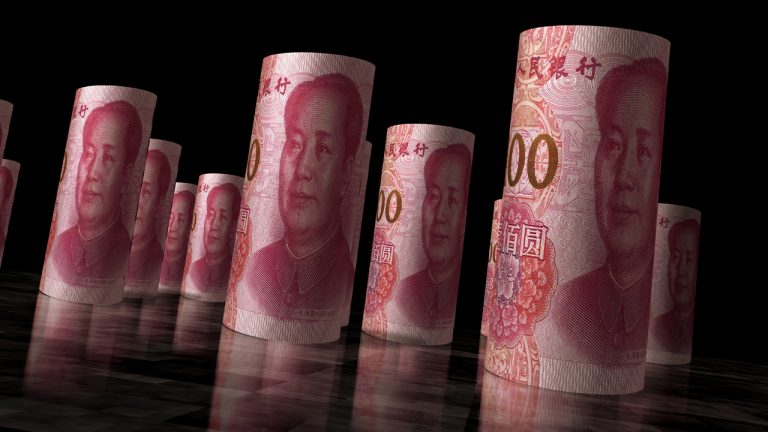 The annual inflation rate in China has unexpectedly slowed down in March to its lowest level in a year and a half, the latest statistical data indicates. On a monthly basis, consumer prices decreased for a second consecutive month, despite estimates suggesting they will remain unchanged. Post Zero-Covid Policy Inflation in China Eases Further China’s […]
The annual inflation rate in China has unexpectedly slowed down in March to its lowest level in a year and a half, the latest statistical data indicates. On a monthly basis, consumer prices decreased for a second consecutive month, despite estimates suggesting they will remain unchanged. Post Zero-Covid Policy Inflation in China Eases Further China’s […]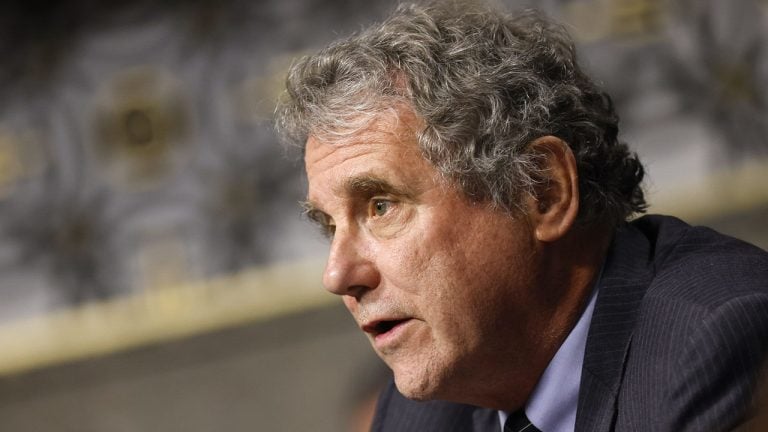 On Tuesday, the U.S. Senate Committee on Banking, Housing, and Urban Affairs, also known as the Senate Banking Committee, held a hearing to discuss the recent bank collapses in the United States and the regulatory response. Throughout the testimonies, digital assets and crypto businesses were mentioned. Senate Banking Committee chairman Sherrod Brown claimed on Tuesday […]
On Tuesday, the U.S. Senate Committee on Banking, Housing, and Urban Affairs, also known as the Senate Banking Committee, held a hearing to discuss the recent bank collapses in the United States and the regulatory response. Throughout the testimonies, digital assets and crypto businesses were mentioned. Senate Banking Committee chairman Sherrod Brown claimed on Tuesday […]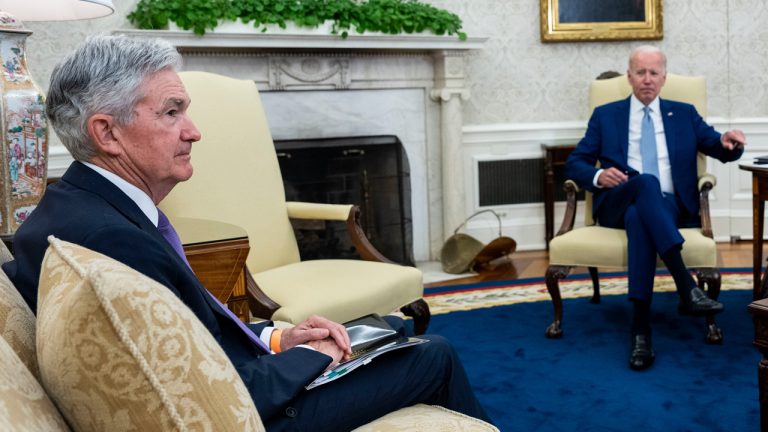 With the Federal Open Market Committee convening on Wednesday and the recent financial troubles facing the U.S. banking system, White House press secretary Karine Jean-Pierre said President Joe Biden has “confidence” in Federal Reserve chair Jerome Powell. Meanwhile, according to the CME Group’s Fedwatch tool, the target rate probability suggests the Fed will raise the […]
With the Federal Open Market Committee convening on Wednesday and the recent financial troubles facing the U.S. banking system, White House press secretary Karine Jean-Pierre said President Joe Biden has “confidence” in Federal Reserve chair Jerome Powell. Meanwhile, according to the CME Group’s Fedwatch tool, the target rate probability suggests the Fed will raise the […] At the start of the week, a troy ounce of .999 fine gold was trading at $1,813 per unit. Seven days later, gold rose 9.65% against the U.S. dollar to the current spot price of $1,988 per ounce. Gold’s rise comes at a time when confidence in the global banking system is at an all-time […]
At the start of the week, a troy ounce of .999 fine gold was trading at $1,813 per unit. Seven days later, gold rose 9.65% against the U.S. dollar to the current spot price of $1,988 per ounce. Gold’s rise comes at a time when confidence in the global banking system is at an all-time […]